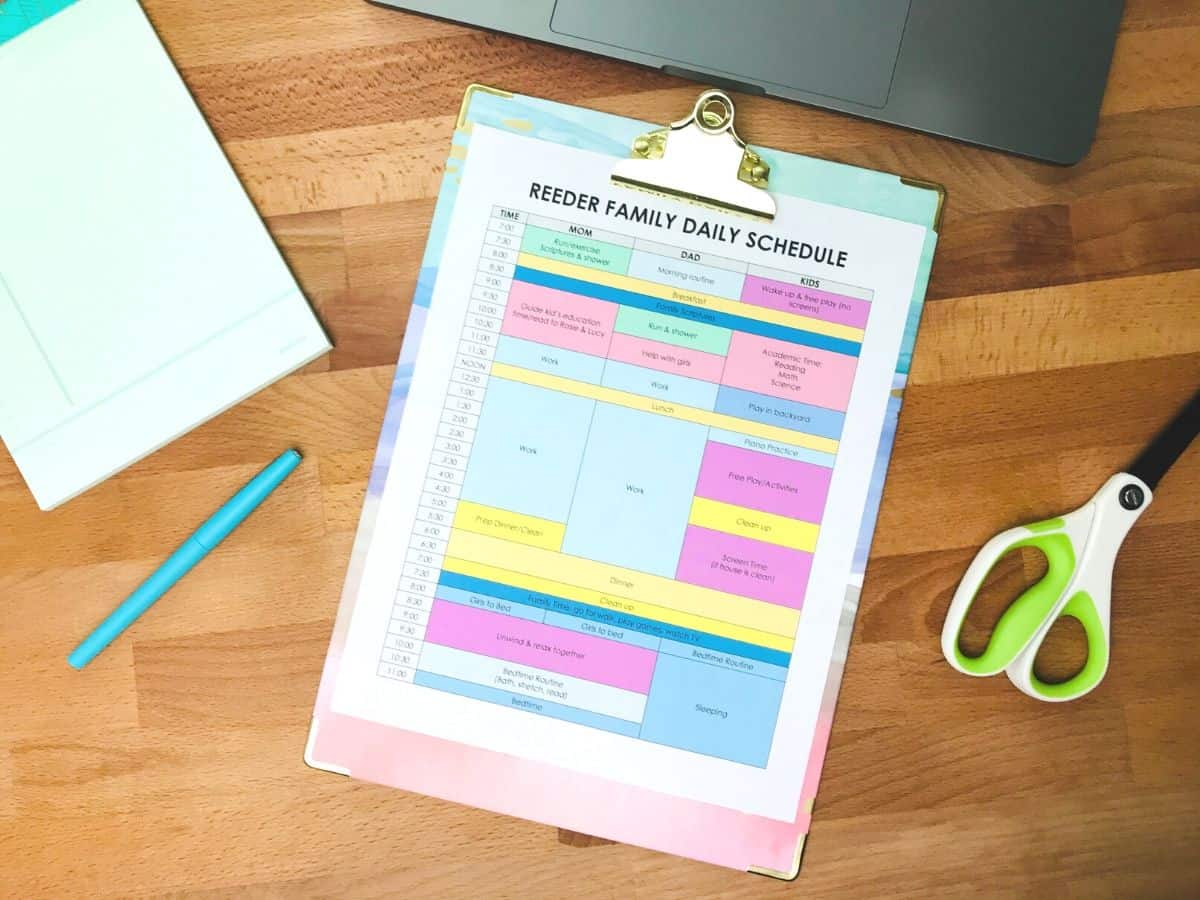Deprecated : Constant E_STRICT is deprecated in /home/haskirco/dealexplorenow.com/system/core/Exceptions.php on line 75
A PHP Error was encountered
Severity: 8192
Message: Creation of dynamic property CI_URI::$config is deprecated
Filename: core/URI.php
Line Number: 101
Backtrace:
File: /home/haskirco/dealexplorenow.com/index.php
A PHP Error was encountered
Severity: 8192
Message: Creation of dynamic property CI_Router::$uri is deprecated
Filename: core/Router.php
Line Number: 127
Backtrace:
File: /home/haskirco/dealexplorenow.com/index.php
A PHP Error was encountered
Severity: 8192
Message: Creation of dynamic property Home::$benchmark is deprecated
Filename: core/Controller.php
Line Number: 82
Backtrace:
File: /home/haskirco/dealexplorenow.com/application/controllers/Home.php
File: /home/haskirco/dealexplorenow.com/index.php
A PHP Error was encountered
Severity: 8192
Message: Creation of dynamic property Home::$hooks is deprecated
Filename: core/Controller.php
Line Number: 82
Backtrace:
File: /home/haskirco/dealexplorenow.com/application/controllers/Home.php
File: /home/haskirco/dealexplorenow.com/index.php
A PHP Error was encountered
Severity: 8192
Message: Creation of dynamic property Home::$config is deprecated
Filename: core/Controller.php
Line Number: 82
Backtrace:
File: /home/haskirco/dealexplorenow.com/application/controllers/Home.php
File: /home/haskirco/dealexplorenow.com/index.php
A PHP Error was encountered
Severity: 8192
Message: Creation of dynamic property Home::$log is deprecated
Filename: core/Controller.php
Line Number: 82
Backtrace:
File: /home/haskirco/dealexplorenow.com/application/controllers/Home.php
File: /home/haskirco/dealexplorenow.com/index.php
A PHP Error was encountered
Severity: 8192
Message: Creation of dynamic property Home::$utf8 is deprecated
Filename: core/Controller.php
Line Number: 82
Backtrace:
File: /home/haskirco/dealexplorenow.com/application/controllers/Home.php
File: /home/haskirco/dealexplorenow.com/index.php
A PHP Error was encountered
Severity: 8192
Message: Creation of dynamic property Home::$uri is deprecated
Filename: core/Controller.php
Line Number: 82
Backtrace:
File: /home/haskirco/dealexplorenow.com/application/controllers/Home.php
File: /home/haskirco/dealexplorenow.com/index.php
A PHP Error was encountered
Severity: 8192
Message: Creation of dynamic property Home::$exceptions is deprecated
Filename: core/Controller.php
Line Number: 82
Backtrace:
File: /home/haskirco/dealexplorenow.com/application/controllers/Home.php
File: /home/haskirco/dealexplorenow.com/index.php
A PHP Error was encountered
Severity: 8192
Message: Creation of dynamic property Home::$router is deprecated
Filename: core/Controller.php
Line Number: 82
Backtrace:
File: /home/haskirco/dealexplorenow.com/application/controllers/Home.php
File: /home/haskirco/dealexplorenow.com/index.php
A PHP Error was encountered
Severity: 8192
Message: Creation of dynamic property Home::$output is deprecated
Filename: core/Controller.php
Line Number: 82
Backtrace:
File: /home/haskirco/dealexplorenow.com/application/controllers/Home.php
File: /home/haskirco/dealexplorenow.com/index.php
A PHP Error was encountered
Severity: 8192
Message: Creation of dynamic property Home::$security is deprecated
Filename: core/Controller.php
Line Number: 82
Backtrace:
File: /home/haskirco/dealexplorenow.com/application/controllers/Home.php
File: /home/haskirco/dealexplorenow.com/index.php
A PHP Error was encountered
Severity: 8192
Message: Creation of dynamic property Home::$input is deprecated
Filename: core/Controller.php
Line Number: 82
Backtrace:
File: /home/haskirco/dealexplorenow.com/application/controllers/Home.php
File: /home/haskirco/dealexplorenow.com/index.php
A PHP Error was encountered
Severity: 8192
Message: Creation of dynamic property Home::$lang is deprecated
Filename: core/Controller.php
Line Number: 82
Backtrace:
File: /home/haskirco/dealexplorenow.com/application/controllers/Home.php
File: /home/haskirco/dealexplorenow.com/index.php
A PHP Error was encountered
Severity: 8192
Message: Creation of dynamic property Home::$db is deprecated
Filename: core/Loader.php
Line Number: 396
Backtrace:
File: /home/haskirco/dealexplorenow.com/application/controllers/Home.php
File: /home/haskirco/dealexplorenow.com/index.php
A PHP Error was encountered
Severity: 8192
Message: Creation of dynamic property CI_DB_mysqli_driver::$failover is deprecated
Filename: database/DB_driver.php
Line Number: 371
Backtrace:
File: /home/haskirco/dealexplorenow.com/application/controllers/Home.php
File: /home/haskirco/dealexplorenow.com/index.php
A PHP Error was encountered
Severity: 8192
Message: Return type of CI_Session_files_driver::open($save_path, $name) should either be compatible with SessionHandlerInterface::open(string $path, string $name): bool, or the #[\ReturnTypeWillChange] attribute should be used to temporarily suppress the notice
Filename: drivers/Session_files_driver.php
Line Number: 132
Backtrace:
File: /home/haskirco/dealexplorenow.com/application/controllers/Home.php
File: /home/haskirco/dealexplorenow.com/index.php
A PHP Error was encountered
Severity: 8192
Message: Return type of CI_Session_files_driver::close() should either be compatible with SessionHandlerInterface::close(): bool, or the #[\ReturnTypeWillChange] attribute should be used to temporarily suppress the notice
Filename: drivers/Session_files_driver.php
Line Number: 294
Backtrace:
File: /home/haskirco/dealexplorenow.com/application/controllers/Home.php
File: /home/haskirco/dealexplorenow.com/index.php
A PHP Error was encountered
Severity: 8192
Message: Return type of CI_Session_files_driver::read($session_id) should either be compatible with SessionHandlerInterface::read(string $id): string|false, or the #[\ReturnTypeWillChange] attribute should be used to temporarily suppress the notice
Filename: drivers/Session_files_driver.php
Line Number: 168
Backtrace:
File: /home/haskirco/dealexplorenow.com/application/controllers/Home.php
File: /home/haskirco/dealexplorenow.com/index.php
A PHP Error was encountered
Severity: 8192
Message: Return type of CI_Session_files_driver::write($session_id, $session_data) should either be compatible with SessionHandlerInterface::write(string $id, string $data): bool, or the #[\ReturnTypeWillChange] attribute should be used to temporarily suppress the notice
Filename: drivers/Session_files_driver.php
Line Number: 237
Backtrace:
File: /home/haskirco/dealexplorenow.com/application/controllers/Home.php
File: /home/haskirco/dealexplorenow.com/index.php
A PHP Error was encountered
Severity: 8192
Message: Return type of CI_Session_files_driver::destroy($session_id) should either be compatible with SessionHandlerInterface::destroy(string $id): bool, or the #[\ReturnTypeWillChange] attribute should be used to temporarily suppress the notice
Filename: drivers/Session_files_driver.php
Line Number: 317
Backtrace:
File: /home/haskirco/dealexplorenow.com/application/controllers/Home.php
File: /home/haskirco/dealexplorenow.com/index.php
A PHP Error was encountered
Severity: 8192
Message: Return type of CI_Session_files_driver::gc($maxlifetime) should either be compatible with SessionHandlerInterface::gc(int $max_lifetime): int|false, or the #[\ReturnTypeWillChange] attribute should be used to temporarily suppress the notice
Filename: drivers/Session_files_driver.php
Line Number: 358
Backtrace:
File: /home/haskirco/dealexplorenow.com/application/controllers/Home.php
File: /home/haskirco/dealexplorenow.com/index.php
A PHP Error was encountered
Severity: Warning
Message: ini_set(): Session ini settings cannot be changed after headers have already been sent
Filename: Session/Session.php
Line Number: 282
Backtrace:
File: /home/haskirco/dealexplorenow.com/application/controllers/Home.php
File: /home/haskirco/dealexplorenow.com/index.php
A PHP Error was encountered
Severity: Warning
Message: session_set_cookie_params(): Session cookie parameters cannot be changed after headers have already been sent
Filename: Session/Session.php
Line Number: 289
Backtrace:
File: /home/haskirco/dealexplorenow.com/application/controllers/Home.php
File: /home/haskirco/dealexplorenow.com/index.php
A PHP Error was encountered
Severity: Warning
Message: ini_set(): Session ini settings cannot be changed after headers have already been sent
Filename: Session/Session.php
Line Number: 304
Backtrace:
File: /home/haskirco/dealexplorenow.com/application/controllers/Home.php
File: /home/haskirco/dealexplorenow.com/index.php
A PHP Error was encountered
Severity: Warning
Message: ini_set(): Session ini settings cannot be changed after headers have already been sent
Filename: Session/Session.php
Line Number: 314
Backtrace:
File: /home/haskirco/dealexplorenow.com/application/controllers/Home.php
File: /home/haskirco/dealexplorenow.com/index.php
A PHP Error was encountered
Severity: Warning
Message: ini_set(): Session ini settings cannot be changed after headers have already been sent
Filename: Session/Session.php
Line Number: 315
Backtrace:
File: /home/haskirco/dealexplorenow.com/application/controllers/Home.php
File: /home/haskirco/dealexplorenow.com/index.php
A PHP Error was encountered
Severity: Warning
Message: ini_set(): Session ini settings cannot be changed after headers have already been sent
Filename: Session/Session.php
Line Number: 316
Backtrace:
File: /home/haskirco/dealexplorenow.com/application/controllers/Home.php
File: /home/haskirco/dealexplorenow.com/index.php
A PHP Error was encountered
Severity: Warning
Message: ini_set(): Session ini settings cannot be changed after headers have already been sent
Filename: Session/Session.php
Line Number: 317
Backtrace:
File: /home/haskirco/dealexplorenow.com/application/controllers/Home.php
File: /home/haskirco/dealexplorenow.com/index.php
A PHP Error was encountered
Severity: Warning
Message: ini_set(): Session ini settings cannot be changed after headers have already been sent
Filename: Session/Session.php
Line Number: 375
Backtrace:
File: /home/haskirco/dealexplorenow.com/application/controllers/Home.php
File: /home/haskirco/dealexplorenow.com/index.php
A PHP Error was encountered
Severity: Warning
Message: session_set_save_handler(): Session save handler cannot be changed after headers have already been sent
Filename: Session/Session.php
Line Number: 110
Backtrace:
File: /home/haskirco/dealexplorenow.com/application/controllers/Home.php
File: /home/haskirco/dealexplorenow.com/index.php
A PHP Error was encountered
Severity: Warning
Message: session_start(): Session cannot be started after headers have already been sent
Filename: Session/Session.php
Line Number: 143
Backtrace:
File: /home/haskirco/dealexplorenow.com/application/controllers/Home.php
File: /home/haskirco/dealexplorenow.com/index.php
A PHP Error was encountered
Severity: 8192
Message: Creation of dynamic property Home::$session is deprecated
Filename: core/Loader.php
Line Number: 1283
Backtrace:
File: /home/haskirco/dealexplorenow.com/application/controllers/Home.php
File: /home/haskirco/dealexplorenow.com/index.php
A PHP Error was encountered
Severity: 8192
Message: Creation of dynamic property Home::$form_validation is deprecated
Filename: core/Loader.php
Line Number: 1283
Backtrace:
File: /home/haskirco/dealexplorenow.com/application/controllers/Home.php
File: /home/haskirco/dealexplorenow.com/index.php
A PHP Error was encountered
Severity: 8192
Message: Creation of dynamic property Home::$catnstore_model is deprecated
Filename: core/Loader.php
Line Number: 358
Backtrace:
File: /home/haskirco/dealexplorenow.com/application/controllers/Home.php
File: /home/haskirco/dealexplorenow.com/index.php
A PHP Error was encountered
Severity: 8192
Message: Creation of dynamic property CI_Loader::$load is deprecated
Filename: core/Loader.php
Line Number: 931
Backtrace:
File: /home/haskirco/dealexplorenow.com/application/controllers/Home.php
File: /home/haskirco/dealexplorenow.com/index.php
A PHP Error was encountered
Severity: 8192
Message: Creation of dynamic property CI_Loader::$benchmark is deprecated
Filename: core/Loader.php
Line Number: 931
Backtrace:
File: /home/haskirco/dealexplorenow.com/application/controllers/Home.php
File: /home/haskirco/dealexplorenow.com/index.php
A PHP Error was encountered
Severity: 8192
Message: Creation of dynamic property CI_Loader::$hooks is deprecated
Filename: core/Loader.php
Line Number: 931
Backtrace:
File: /home/haskirco/dealexplorenow.com/application/controllers/Home.php
File: /home/haskirco/dealexplorenow.com/index.php
A PHP Error was encountered
Severity: 8192
Message: Creation of dynamic property CI_Loader::$config is deprecated
Filename: core/Loader.php
Line Number: 931
Backtrace:
File: /home/haskirco/dealexplorenow.com/application/controllers/Home.php
File: /home/haskirco/dealexplorenow.com/index.php
A PHP Error was encountered
Severity: 8192
Message: Creation of dynamic property CI_Loader::$log is deprecated
Filename: core/Loader.php
Line Number: 931
Backtrace:
File: /home/haskirco/dealexplorenow.com/application/controllers/Home.php
File: /home/haskirco/dealexplorenow.com/index.php
A PHP Error was encountered
Severity: 8192
Message: Creation of dynamic property CI_Loader::$utf8 is deprecated
Filename: core/Loader.php
Line Number: 931
Backtrace:
File: /home/haskirco/dealexplorenow.com/application/controllers/Home.php
File: /home/haskirco/dealexplorenow.com/index.php
A PHP Error was encountered
Severity: 8192
Message: Creation of dynamic property CI_Loader::$uri is deprecated
Filename: core/Loader.php
Line Number: 931
Backtrace:
File: /home/haskirco/dealexplorenow.com/application/controllers/Home.php
File: /home/haskirco/dealexplorenow.com/index.php
A PHP Error was encountered
Severity: 8192
Message: Creation of dynamic property CI_Loader::$exceptions is deprecated
Filename: core/Loader.php
Line Number: 931
Backtrace:
File: /home/haskirco/dealexplorenow.com/application/controllers/Home.php
File: /home/haskirco/dealexplorenow.com/index.php
A PHP Error was encountered
Severity: 8192
Message: Creation of dynamic property CI_Loader::$router is deprecated
Filename: core/Loader.php
Line Number: 931
Backtrace:
File: /home/haskirco/dealexplorenow.com/application/controllers/Home.php
File: /home/haskirco/dealexplorenow.com/index.php
A PHP Error was encountered
Severity: 8192
Message: Creation of dynamic property CI_Loader::$output is deprecated
Filename: core/Loader.php
Line Number: 931
Backtrace:
File: /home/haskirco/dealexplorenow.com/application/controllers/Home.php
File: /home/haskirco/dealexplorenow.com/index.php
A PHP Error was encountered
Severity: 8192
Message: Creation of dynamic property CI_Loader::$security is deprecated
Filename: core/Loader.php
Line Number: 931
Backtrace:
File: /home/haskirco/dealexplorenow.com/application/controllers/Home.php
File: /home/haskirco/dealexplorenow.com/index.php
A PHP Error was encountered
Severity: 8192
Message: Creation of dynamic property CI_Loader::$input is deprecated
Filename: core/Loader.php
Line Number: 931
Backtrace:
File: /home/haskirco/dealexplorenow.com/application/controllers/Home.php
File: /home/haskirco/dealexplorenow.com/index.php
A PHP Error was encountered
Severity: 8192
Message: Creation of dynamic property CI_Loader::$lang is deprecated
Filename: core/Loader.php
Line Number: 931
Backtrace:
File: /home/haskirco/dealexplorenow.com/application/controllers/Home.php
File: /home/haskirco/dealexplorenow.com/index.php
A PHP Error was encountered
Severity: 8192
Message: Creation of dynamic property CI_Loader::$db is deprecated
Filename: core/Loader.php
Line Number: 931
Backtrace:
File: /home/haskirco/dealexplorenow.com/application/controllers/Home.php
File: /home/haskirco/dealexplorenow.com/index.php
A PHP Error was encountered
Severity: 8192
Message: Creation of dynamic property CI_Loader::$session is deprecated
Filename: core/Loader.php
Line Number: 931
Backtrace:
File: /home/haskirco/dealexplorenow.com/application/controllers/Home.php
File: /home/haskirco/dealexplorenow.com/index.php
A PHP Error was encountered
Severity: 8192
Message: Creation of dynamic property CI_Loader::$form_validation is deprecated
Filename: core/Loader.php
Line Number: 931
Backtrace:
File: /home/haskirco/dealexplorenow.com/application/controllers/Home.php
File: /home/haskirco/dealexplorenow.com/index.php
A PHP Error was encountered
Severity: 8192
Message: Creation of dynamic property CI_Loader::$catnstore_model is deprecated
Filename: core/Loader.php
Line Number: 931
Backtrace:
File: /home/haskirco/dealexplorenow.com/application/controllers/Home.php
File: /home/haskirco/dealexplorenow.com/index.php
A PHP Error was encountered
Severity: 8192
Message: Creation of dynamic property CI_Loader::$getexpire is deprecated
Filename: core/Loader.php
Line Number: 931
Backtrace:
File: /home/haskirco/dealexplorenow.com/application/controllers/Home.php
File: /home/haskirco/dealexplorenow.com/index.php
DealExploreNow – Best & Trending Blogs







